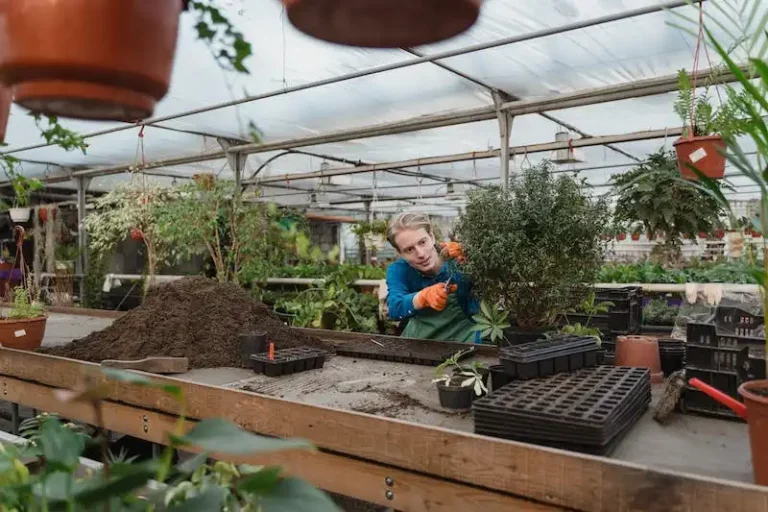The green mustard, also known as Chinese mustard, is a leafy green vegetable that is a must-have in any recipe. Its vibrant green color and distinct peppery taste make it a popular choice among chefs and home cooks alike. This versatile plant is easy to grow from seed and can be used as a substitute for other greens like spinach or kale.
When buying green mustard, look for crisp leaves with no signs of wilting or discoloration. The best way to store them is to keep them in a plastic bag in the refrigerator, where they can last for up to a week. Before using them, clean the leaves thoroughly to remove any dirt or debris.
There are many ways to enjoy green mustard in your cooking. You can add them to stir-fries, soups, or salads for an extra boost of flavor and nutrition. They can also be baked into a delicious quiche or used as a topping for pizza. The possibilities are endless!
If you’re not a fan of the peppery taste of green mustard, you can tame it down by blanching the leaves or lightly cooking them. This will help to mellow out the flavor and make it more enjoyable for those who prefer a milder taste. Additionally, you can pair green mustard with other ingredients like ginger, garlic, or soy sauce to enhance its flavors.
In terms of nutrition, green mustard is packed with vitamins and minerals. It is a good source of vitamin C, vitamin K, and folate. It is also low in calories and high in fiber, making it a healthy choice for those looking to add more vegetables to their diet.
Next time you’re at the grocery store, don’t forget to pick up some green mustard and give it a try. You’ll be amazed at how this humble green can transform your recipes and add a unique touch to your dishes. Whether you’re a seasoned cook or just starting out, green mustard is a must-have ingredient in your kitchen. So go ahead, explore the world of green mustard and let your culinary creativity run wild!
Green Mustard
Green mustard, also known as Brassica juncea, is a leafy green that belongs to the brassicas family. It has a crisp texture and a peppery taste, making it a popular choice for many recipes. If you’re not familiar with green mustard, here’s what you need to know:
Characteristics: Green mustard leaves are light green in color and have a slightly serrated edge. They have a bold flavor that becomes milder when cooked. Green mustard plants can grow up to 2 feet tall and are usually ready to harvest within 6-8 weeks.
Selection and Preparation: When buying green mustard, choose leaves that are fresh and crisp. Avoid leaves that are wilted or yellow. To clean the green mustard, simply wash the leaves under cold running water. If there are any dirt or sand particles, give them a gentle rub with your fingers. Pat them dry with a clean kitchen towel or allow them to air dry.
Storing: To store green mustard, place the clean, dry leaves in a plastic bag or airtight container and keep them in the refrigerator. They can be stored for up to a week. If the leaves become wilted or slimy, they should be discarded.
Flavors and Uses: Green mustard can be used in a variety of recipes. It pairs well with flavors such as ginger, garlic, soy sauce, and sesame oil. It can be stir-fried, sautéed, added to soups, or used as a substitute for lettuce in salads. Green mustard leaves can also be baked to make crispy chips or used in quiches.
Nutrition: Green mustard is a nutritious leafy green that is rich in vitamins A, C, and K. It also contains minerals such as calcium, iron, and potassium. Adding green mustard to your diet can help boost your immune system and support bone health.
Additional Information: Green mustard is also known as Chinese mustard or Indian mustard. It is often used in Chinese, Japanese, and Indian cuisines. Green mustard seed can be used to make mustard flakes or can be ground into a powder for additional flavors.
In conclusion, green mustard is a versatile and nutritious leafy green that can be enjoyed in a variety of ways. Whether you choose to cook them or eat them raw, green mustard is a flavorful addition to your meals.
Green River Mustard Not Treated
Green River Mustard is a type of mustard made from the leaves of the green mustard plant. Unlike other types of mustard that are treated with additives and preservatives, Green River Mustard is all-natural and provides a healthier option for mustard lovers.
Benefits of Green River Mustard
Green River Mustard is made from the leaves of the green mustard plant, which is a member of the brassicas family. The leaves of this plant are rich in vitamins, minerals, and antioxidants, making Green River Mustard a nutritious choice. It is also low in calories and can be used as a substitute for other high-calorie condiments.
| What You’ll Need: | How to Make: |
|---|---|
| – Green River Mustard leaves | 1. Start by selecting the freshest Green River Mustard leaves. Look for leaves that are vibrant green and free from any signs of damage or wilting. |
| – Olive oil | 2. Clean the Green River Mustard leaves under cold running water to remove any dirt or debris. Pat them dry with a paper towel. |
| – Almond flakes | 3. In a food processor, combine the Green River Mustard leaves, olive oil, and almond flakes. Blend until smooth. |
| – Garlic cloves | 4. Add garlic cloves and ginger to the mixture and blend again until well combined. |
| – Salt and pepper | 5. Season with salt and pepper to taste. |
| – Lemon juice | 6. Add lemon juice to give the mustard an extra kick. |
Green River Mustard can be used in a variety of recipes. It adds a delicious and peppery taste to salads, sandwiches, and grilled vegetables. You can also use Green River Mustard as a marinade for meats or as a base for dressings and sauces.
When storing Green River Mustard, keep it in an airtight container in the refrigerator. It will last up to a week when stored properly.
So next time you’re at the grocery store, choose Green River Mustard for a healthier and more flavorful option. Try out our recipe and enjoy the delicious and nutritious benefits of this all-natural mustard!
Description
Green mustard, also known as Brassica juncea, is a type of leafy green that is commonly found in most grocery stores. With its peppery taste and nutritional characteristics, green mustard leaves are a healthy and delicious addition to your meals.
When selecting green mustard, choose the freshest leaves with a vibrant green color. Avoid leaves that are wilted or have brown spots, as they may indicate poor quality or age. To store green mustard, wrap the leaves in a clean, damp paper towel and place them in a loosely sealed plastic bag. They can last up to a week in the refrigerator.
Green mustard can be used in a variety of recipes to add flavor and depth. It can be eaten raw in salads for an extra kick, or cooked to soften its peppery taste. If using in a recipe, try substituting it for other leafy greens like spinach or kale. The flavor will be different, but it can create a unique twist to your dish.
One popular recipe that includes green mustard is quiche. Begin by washing and drying the leaves, then removing the tough stems. Precook the greens by lightly sautéing them with olive oil and garlic until wilted. Line a pie crust with the cooked greens, and then pour in a mixture of beaten eggs, milk, gruyere cheese, and almond flakes. Bake until the quiche is set and golden brown. Serve with a light salad for a delicious meal.
Green mustard plants could also be treated as a perennial and not just an annual. Though they’re more often treated as an annual, when you select and preserve the seeds for next year’s planting, the plants will grow longer and stronger.
In addition to their flavorful qualities, green mustard greens have many nutritional benefits. They are high in vitamin A, vitamin C, and calcium. They also contain antioxidants, which can help protect against certain diseases. With just a teaspoon of olive oil added to your dish, you can enhance the absorption of these nutrients.
Green mustard leaves can be enjoyed in a variety of ways. Whether you eat them raw, lightly cooked, or added to your favorite recipe, their peppery flavors and vibrant green color will add depth and nutrition to your meals. So, the next time you’re at the grocery store, don’t forget to grab some green mustard and give it a try!
Seed Characteristics
Green Mustard plants, like other brassicas, produce small seeds that are rich in nutrition. These seeds can be used for a variety of purposes and have several unique characteristics.
Flavors and Nutrition
Green Mustard seeds have a slightly spicy and nutty flavor. They can be eaten raw, cooked, or used in a variety of recipes to add an additional taste to your dishes. They are packed with essential nutrients, including vitamins A, C, and K, as well as minerals like calcium and iron.
Storing and Selecting Seeds
When selecting Green Mustard seeds, it is important to choose the freshest ones available. Look for seeds that are clean, dry, and free from any signs of damage. These seeds can be stored in a cool, dry place for up to a year, ensuring that you always have a fresh supply on hand.
Planting and Growing
To grow Green Mustard plants from seeds, begin by treating the seeds with light frost for a week. Then, plant them in a well-draining soil with a pH level between 6 to 7. Brassicas are cool-season crops, so they can tolerate frost and grow well in colder climates.
Characteristics of Green Mustard Plants
Green Mustard plants are leafy greens that resemble Chinese cabbage. They have dark green leaves with a slightly wrinkled texture. The leaves can be harvested and used in a variety of dishes, including salads, stir-fries, and quiches. Green Mustard can also be enjoyed in its raw form or added as a garnish to enhance the flavors of your meals.
Seed to Plant: How Green Mustards Grow
Once the seeds are planted, Green Mustard plants will begin to grow within a few days. With proper care and attention, they can reach their full size in about 6 to 8 weeks. The plants will produce beautiful yellow flowers that attract pollinators, and eventually, they will develop seed pods that contain the next generation of mustard seeds.
Using Mustard Green Seeds
Green Mustard seeds can be used in a variety of ways. They can be ground into a fine powder to make mustard flakes or used as a spice in cooking. Mustard seeds can also be soaked and sprouted to add a fresh and crisp texture to salads or sandwiches.
Recipes with Green Mustard Seeds
If you’re looking for delicious ways to incorporate Green Mustard seeds, you can try adding them to recipes like almond-crusted salmon with Green Mustard, quinoa and mustard greens stir-fry, or roasted potatoes with Green Mustard and ginger. These recipes offer a unique combination of flavors and the healthy benefits of mustard seeds.
| Green Mustard Seed Characteristics: |
|---|
| Flavors |
| Nutrition |
| Storing and Selecting Seeds |
| Planting and Growing |
| Characteristics of Green Mustard Plants |
| Seed to Plant: How Green Mustards Grow |
| Using Mustard Green Seeds |
| Recipes with Green Mustard Seeds |


